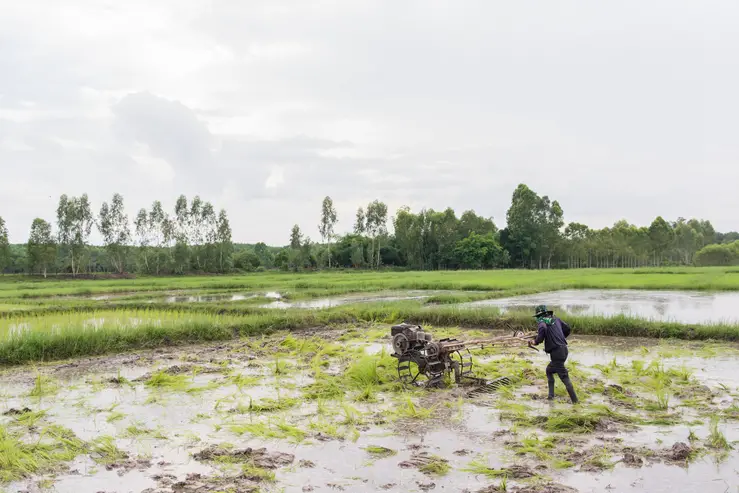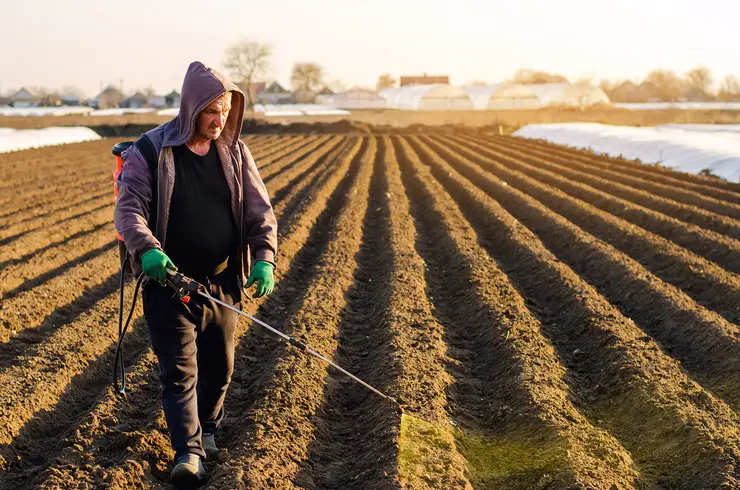Rice is one of the essential staples that is being used in almost every part of the world. It is said that it was first invented around 5000 BC in China. Then the cultivation spread worldwide, and now it has become a global food for everyone living on this planet. It requires water, sunny weather conditions, and proper management to grow. But this is not something impossible! If you are a beginner who doesn’t have any idea about how to grow rice, then this guide is all made for you. So, let’s get started!
How To Grow Rice – Step By Step Guide
Below we have formulated a step-by-step guide to help you grow a worldwide staple plant. If you haven’t planted rice yet, then let’s learn and begin to cultivate your crop.
Step 1: Land Preparation
The very first step is land preparation! Although it will take three to four weeks of hard work. Make your land smooth enough with excessive water. This will also help you stop the growth of unwanted weeds. Filling the field with water can be rain-fed or by irrigation. Plow the lands either by using a hand tractor or a Carabao attached with a plow. This is to turn over the soil and bury weeds as we have the remains of the previous crops.
When the land has been plowed, Harrow the fields twice at a one-week interval; this is done to smoothen the soil and achieve a better tilt for better rice plant growth. The field then should be leveled evenly using a wooden plank or leveler. This is to make sure that the field is flat for water to be evenly distributed in all field parts.

Step 2: Planting
Planting can be done either by transplanting pre-grown seedlings in seedbeds or by direct seeding. Let’s discuss them in detail!

Direct Seeding
You have to pre–germinate the seeds for direct seeding by submerging the seeds in water for about 24 hours. Then incubate the seeds for another 24 hours. Broadcast the seed evenly throughout the field. Drain the field from zero to nine days after sowing to have an exemplary seedling emergency.

Transplanting
The transplanting demands you to prepare a small weed bed. Preparation of the seedbeds is done simultaneously or even before land preparation. This is where the seedling will be grown for 15 to 21 days before uprooting or transplanted. Maintain around two to three centimeters of water depth to prevent the hardening of the soil during seedling pulling. Up root rice seedling for transplant by holding two to three seedlings close to the root, then gently pull the seedlings towards you. Now your rice seedling is ready for transportation.
Transplant uprooted seedlings manually by planting them in rows with 20 by 20- centimeter spacing at a depth of 2 to 3 centimeters.

Step 3: Fertilization
Always pick good quality fertilization from an approved source. Broadcast fertilizer evenly into the field. This provides for nutrients needed by the rice plant in the early stage of growth. Applying fertilizers late will result in slower growth of your rice plant.

Step 4: Weed Management
You can control the weed emergence with spraying. Spraying can also be done before planting to prevent the further development of weeds.

Step 5: Top Dress
The top dress is done when the rice plant is reaching its pinnacle initiation stage. It can take up to 35 to 55 days after planting the rice crop. Apply top dress into the field evenly. It provides nitrogen and potassium plus sulfur, calcium, and chlorine. With these nutrients present and top-dressed, rice plants have a strengthened resistance against pests and diseases and will survive unfavorable weather, leading to better yield.
Applying top-dress too late can result in decreased yield and poor harvest.
Step 6: Pests & Disease Management
You can prevent your crop from pets with regular monitoring and expert help. Early detection of possible pests and diseases is essential to control these before causing damage. At the instance of the pest and disease incident, consults an agronomist on addressing the problem.
Step 7: Water Management
Water must be maintained 3 to 5 centimeters throughout to avoid the emergence of weeds. One week before the expected harvest time, drain the field if there is still any standing water to facilitate harvest and post-harvest operations.
Step 8: Harvest
Rice crops must be harvested when 80 to 85% of the grain ripens or have a golden yellow color. However, the harvesting process can be done manually by using sickles or other required tools. Or you can also do harvesting mechanically with the use of a mechanical harvester.
Wrap Up
Harvesting the crop on time is very important to maximize yield and grain quality. If you harvest crops early then, the grains will break into parts that will devalue your crops. If crops are harvested, late grains may fall from the panicles leading to losses. If you follow the technical ways, it will surely uplift your yield and minimize the losses.


